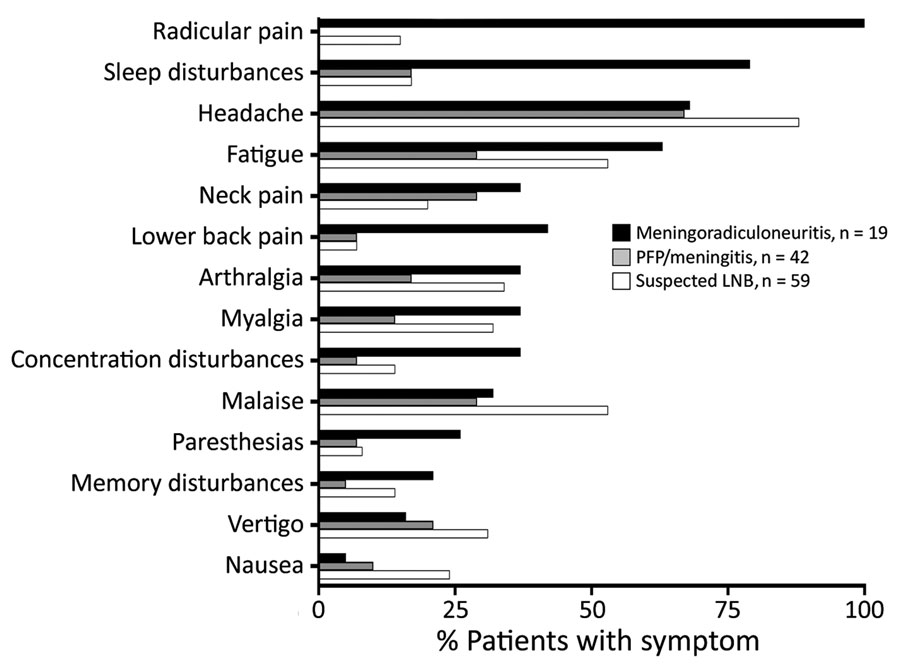Volume 28, Number 4—April 2022
CME ACTIVITY - Research
Unique Clinical, Immune, and Genetic Signature in Patients with Borrelial Meningoradiculoneuritis1
Figure 1

Figure 1. Frequency of individual signs and symptoms at study enrollment among patients with LNB treated in Ljubljana, Slovenia, during 2006–2013. Patients were stratified into 3 groups: meningoradiculoneuritis, PFP/meningitis without radicular pain, or patients with suspected LNB who had EM and signs and symptoms suggestive of LNB but did not meet the standard diagnostic criteria. *Meningoradiculoneuritis vs. PFP/meningitis, p<0.05; †meningoradiculoneuritis vs. suspected LNB, p<0.005. LNB, Lyme neuroborreliosis; PFP, peripheral facial palsy.
1Part of the research reported here was presented at the 31st European Congress of Clinical Microbiology & Infectious Diseases (online), July 9–12, 2021.
2These first authors contributed equally to this article.
3These senior authors contributed equally to this article.